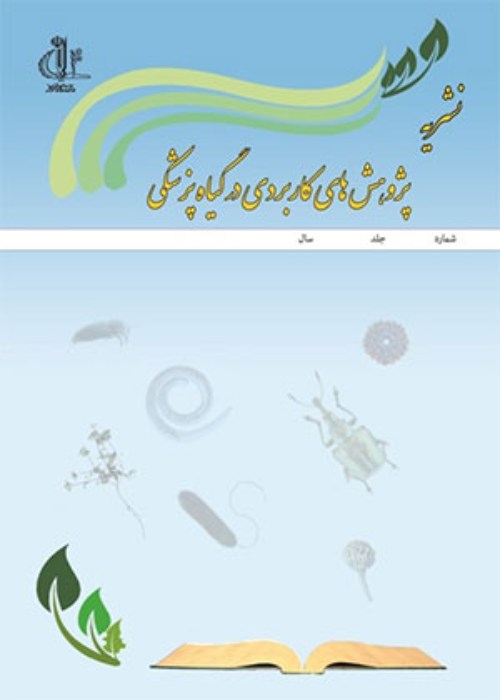Evaluation of bean genotypes resistance to Two spotted spider mite, tssm, Tetranychus urticae Koch under field and greenhouse conditions
Two spotted spider mite,Tetranychus urticae Koch (Acari: Tetranychidae)isone of the most important pests of beans that large amount of acaricides are used to control it every year.The experiment was conducted to evaluate the resistance of 11 bean genotypes (KS-21494, KS-21493, KS-21492, KS-21498, KS-21517, KS-21529) and red (Dadfar cultivar, KS-31287 and KS-31286) to two-spotted spider mite at Khomein Bean Research Station during 2017 and 2018. This study was conducted in the randomized complete block design with three replications and in two experiments with spraying and without spraying in field and greenhouse conditions. Resistance mechanisms (tolerance, antibiosis and antixenosis) and plant resistance index were determined in greenhouse conditions. Sampling was performed by selecting 10 plants from each plot randomly and two leaves from the bottom and the top, then the density and damage of the pest were evaluated in the selected samples. Pest life stages including eggs and active stages (larvae, nymphs and adults) were counted and recorded. The results of this study showed that there was a significant difference among the cultivars and genotypes of beans in yield and its components and the population and damage of two-spotted spider mite. The results of comparing the means showed that the highest and lowest density of two-spotted spider mite eggs were observed in Sadri cultivar and KS-21517 genotype with 198.55 and 41.95, respectively. The highest and lowest yield were recorded 2437 kg/ha and 1221 kg/h on KS-31287 and KS-21529, respectively. KS-31286, KS-21492 and Dadfar were selected as tolerant genotypes and cultivar to two-spotted spider mite with damage scale of 3.6, 4 and 3.8, respectively. Antibiosis resistance mechanism was recorded on Dadfar and genotype KS-31286 with 18.4 and 15.2 adult mites, respectively. The antixenosis mechanism was recorded on genotype KS-31286 and Dadfar cultivar with 1.8 and 1 adult mites, respectively. The results of the calculation of the plant resistance index to two-spotted spider mite showed that the genotype KS-31286 and Dadfar cultivars had the highest resistance index at 9.09 and 14.28, respectively. Therefore, Dadfar cultivar is recommended in the first priority and genotype KS-31286 in the second priority for cultivation in the region. KS-31287 genotype was not selected as resistant genotype due to low plant resistance index despite high yield.
- حق عضویت دریافتی صرف حمایت از نشریات عضو و نگهداری، تکمیل و توسعه مگیران میشود.
- پرداخت حق اشتراک و دانلود مقالات اجازه بازنشر آن در سایر رسانههای چاپی و دیجیتال را به کاربر نمیدهد.


